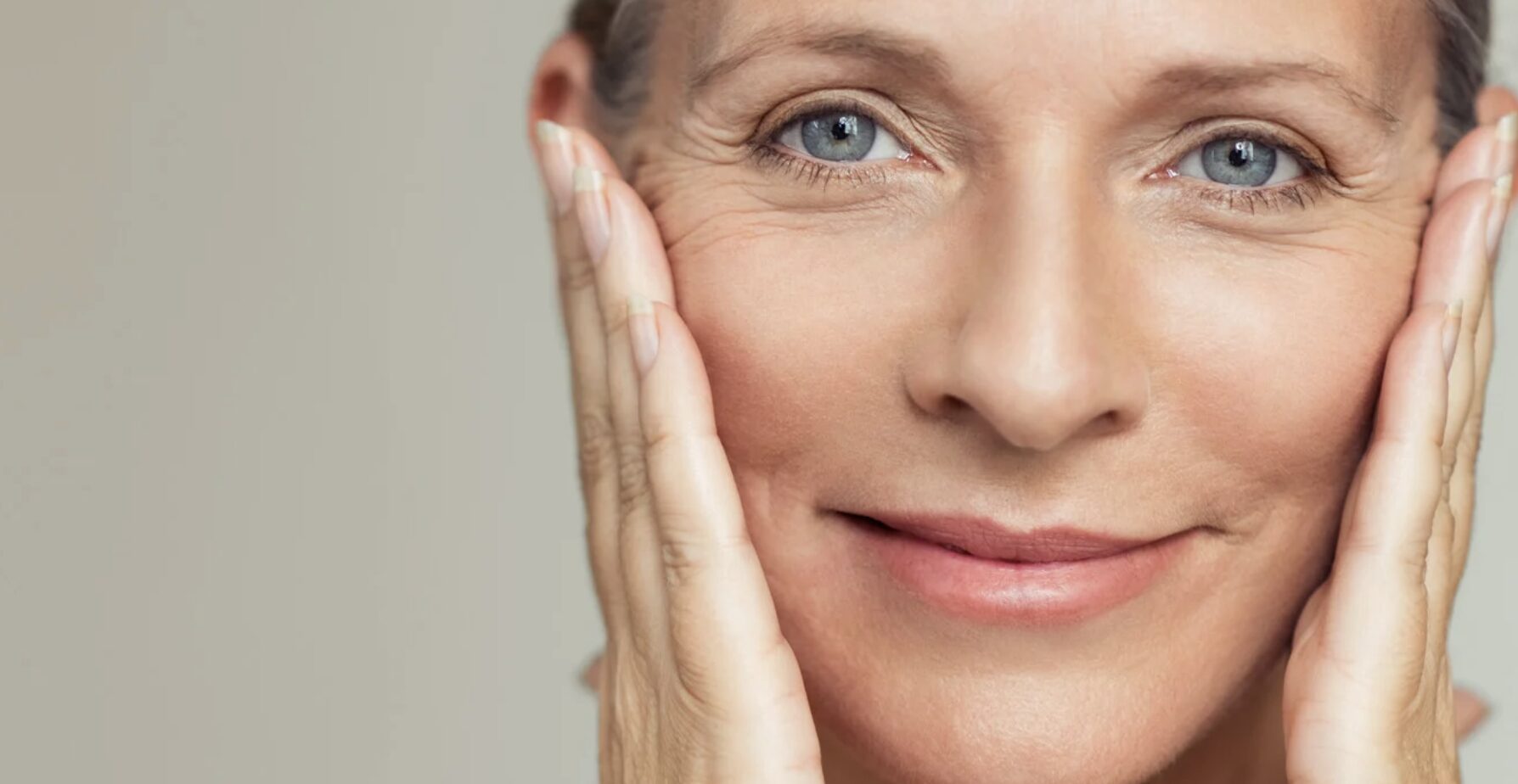Em pleno século XXI, o envelhecimento não tem uma boa reputação… A pele é o principal artefato da passagem do tempo e algumas pessoas não hesitam em recorrer à cirurgia ou a técnicas menos invasivas como o botox, o ácido hialurónico, ou mesmo às últimas poções da moda para a manter lisa e firme como nos seus 20 anos.
Mas antes de chegarmos a esse ponto, quais são os bons hábitos a adotar para que a nossa pele possa envelhecer, mas de forma suave? O envelhecimento natural da pele, um fenómeno inevitável, pode ser acelerado por vários fatores externos à passagem dos anos. Hoje, gostaríamos de a ajudar a reconhecer os primeiros sinais de envelhecimento prematuro da pele, a preveni-lo e a aconselhá-la sobre os melhores tratamentos para contrariar este fenómeno.
O envelhecimento da pele é um processo natural. Resultante de efeitos internos intrínsecos ao indivíduo, mas também de fatores externos ligados principalmente ao estilo de vida, este fenómeno inevitável pode ser atenuado por uma abordagem preventiva global.
O que é o envelhecimento da pele?
Atinge todas as camadas estruturais da pele, desde a mais superficial, a epiderme, até à mais profunda, a hipoderme.
Na epiderme, a renovação celular, que dura geralmente 28 dias, abranda e a produção de lípidos, necessários para uma pele macia, lubrificada e protegida da desidratação, diminui. A pele torna-se assim mais seca e áspera, mais sensível aos raios UV e cicatriza menos.
Na derme, a camada média da pele, os níveis de colagénio e elastina diminuem. O fornecimento de sangue é reduzido. Isto resulta numa pele menos elástica, mais propensa a rugas e rídulas, mas também numa perda de luminosidade e densidade, características de uma pele jovem e rosada.
Na hipoderme, verifica-se uma alteração do tamanho e da quantidade de células adiposas no tecido adiposo. O isolamento térmico da pele diminui. Desta vez, observa-se uma perda de volume, as rugas tornam-se mais profundas e as bochechas ficam mais encovadas.
Como reconhecer o envelhecimento da pele?
O primeiro sinal, e não menos importante, são as temidas rugas e rídulas. Estas formam-se em diferentes zonas do rosto e são os sinais de envelhecimento mais facilmente identificáveis. As rídulas são frequentemente as primeiras a aparecer. Estas pequenas rugas superficiais têm origem no canto exterior do olho, no fundo das bochechas, na testa em linhas horizontais ou entre as sobrancelhas, as primeiras marcas criadas por expressões repetidas.
Formam-se também rugas mais profundas entre o nariz e a boca. Estas são menos marcadas por um rosto expressivo do que pela flacidez da pele.
A perda de volume da pele é também um bom indicador de um ciclo cutâneo alterado. Não sendo fácil de identificar, a perda de volume da pele altera significativamente o aspeto geral do rosto de um indivíduo, ao contrário das rugas, rídulas ou perda de densidade explicadas abaixo. O impacto mais visível desta flacidez dos contornos é a alteração da expressão facial.
Por fim, a perda de densidade manifesta-se mais à superfície, através de uma pele frágil e mais fina. Ao contrário das rugas e da perda de volume, a perda de densidade não se limita a certas zonas, mas afeta todo o rosto.
Quais são os fatores externos que aceleram o envelhecimento da pele?
É inegável que a idade biológica e a genética de um indivíduo determinam certas alterações estruturais da pele. A irrigação dos tecidos diminui com o tempo, reduzindo o fornecimento de nutrientes e oxigénio à superfície da pele. A etnia e o tipo de pele influenciam a rapidez com que os sinais de envelhecimento aparecem na nossa pele.
No entanto, existem fatores extrínsecos que tendem a influenciar a evolução da pele e o seu envelhecimento precoce. Nestes termos, o sol é o inimigo número um. A exposição prolongada aos raios UV do sol gera stress oxidativo, que é responsável pelo envelhecimento precoce da pele, bem como pelas lesões conhecidas como fotoenvelhecimento. Saiba mais sobre os efeitos nocivos do sol neste artigo. A poluição também desempenha um papel importante no envelhecimento precoce da pele. Nas cidades, em particular, há uma libertação significativa de radicais livres (substâncias nocivas geradas pelo oxigénio que respiramos) que são prejudiciais para a pele. Os produtos químicos e a nicotina dos cigarros também aumentam o número de radicais livres na pele. Uma dieta pobre em antioxidantes aumenta o stress oxidativo.
Como minimizar os efeitos do envelhecimento da pele?
Um estilo de vida saudável parece ser a chave para os nossos problemas. Uma vez que o stress oxidativo é a principal causa do envelhecimento da pele, uma dieta rica em antioxidantes, uma proteção suficiente contra o sol e deixar de fumar abrandarão consideravelmente a obsolescência prematura da pele. Por último, uma boa rotina de cuidados da pele é um elemento essencial para manter um bom desenvolvimento das células epidérmicas.
Uma vez que a gama é vasta e as necessidades de cada indivíduo são tão específicas, não hesite em falar com os nossos dermatologistas do Alergia Medical Centre para que eles o possam orientar para os melhores produtos para a sua pele.
Estas informações não substituem o aconselhamento médico. Deve procurar o conselho do seu médico ou de outro profissional de saúde qualificado para quaisquer questões que possa ter relativamente ao seu estado de saúde.
Saiba mais com os nossos dermatologistas


